Indian Sloth Bear
Project Introduction
For more than 400 years sloth bears in India were exploited as dancing bears. A nomadic tribe known as the Kalandars would ‘dance’ the bears for the emperors during the Mughal era. Then, over the centuries, as the kingdoms in India disappeared, the dancing bears became cheap roadside entertainment for villagers and tourists who paid to watch them ‘perform.’ In reality the bears were reacting to excruciating pain.
Mother bears were killed so that poachers could take and sell their cubs to perpetuate this barbaric practice. Through underground trading as many as 200 cubs a year would end up in the hands of the Kalandars. Without administering any anaesthetic, a red hot iron rod would be driven through the muzzle of the bear cub which was usually only about six months old. A coarse rope would then be threaded through the open wound. The rope would be tugged and yanked to make the bear ‘dance’ and for many bears over the years, a life at the end of a rope was all they knew.
The practice of dancing bears was made illegal in India in 1972. Working with our Indian partners Wildlife SOS (WSOS) we rescued more than 620 dancing bears and in 2009 together we rescued the very last one off the streets. The survivors of this cruel trade live in sanctuaries in India where they receive loving care and enjoy a peaceful and pain-free retirement.
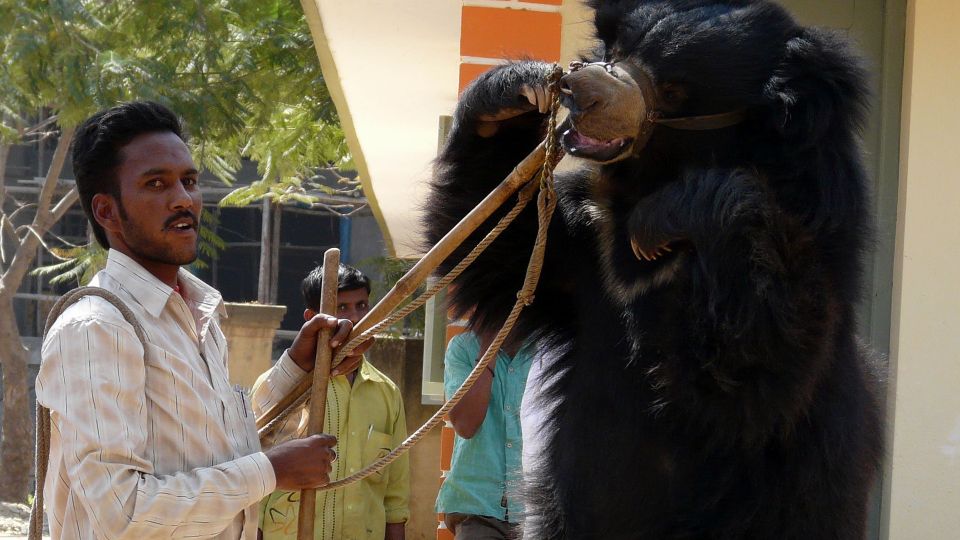
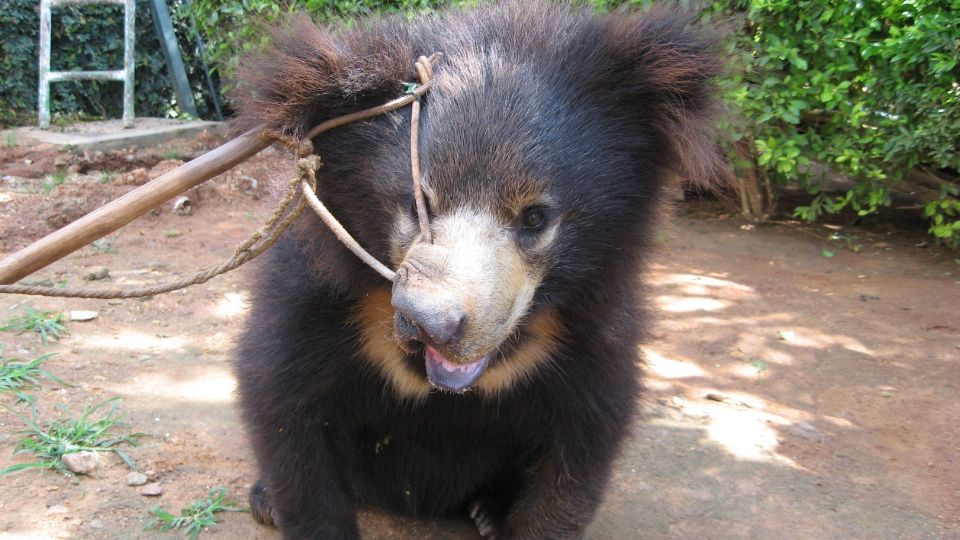
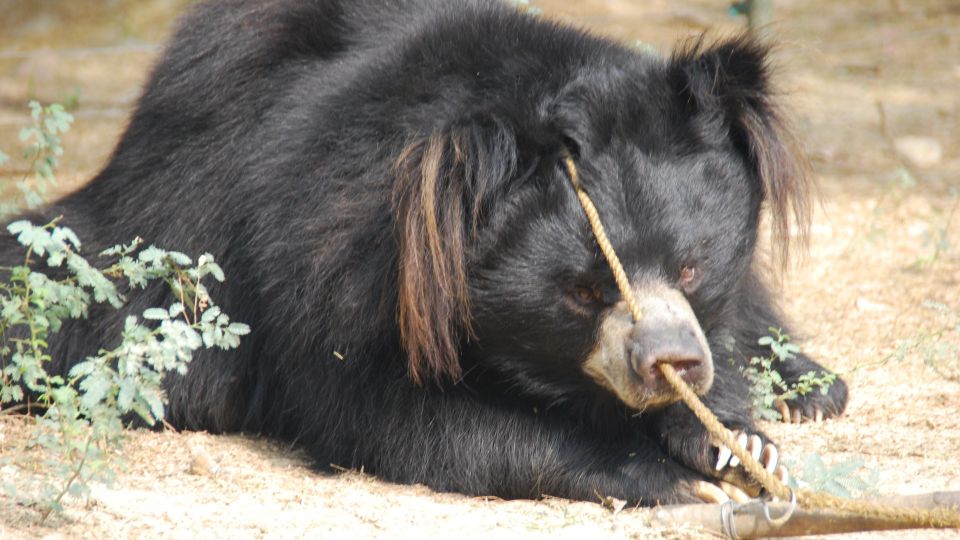
The Bear Sanctuaries
In 2002 we helped our partners Wildlife SOS (WSOS) complete the construction of the Agra Bear Rescue Facility, enabling us to rescue the first six bears on 24 December 2002. From then on the project went from strength to strength, becoming so successful that by the end of 2009 we had rescued all the dancing bears from the streets of India. The majority are housed in Agra, others at a second sanctuary in Bannerghatta near Bangalore in the south and a small number at a third centre in Bhopal, central India.
We are committed to providing the rescued bears with a safe haven where they can live free from fear and pain for the rest of their lives. We aim to give them not only food and shelter but an environment which is as close as possible to life in the wild. The bears have plenty of trees to climb in the free-roaming forest and bathing pools where they can play and cool down in the heat of the day. We work hard to keep the bears healthy and happy. They are given regular medical and dental checks and enjoy a range of environmental enrichment to keep them mentally and physically active.
Since the rescue of the last dancing bear in India, investigations have shown that some bears have been smuggled across the border into Nepal by their Kalandar handlers and continue to suffer cruelty and abuse. We will continue to support Wildlife SOS in their efforts to track down the smugglers and cut these bears free.
-
Agra Bear Rescue Facility (ABRF)
The Agra Bear Rescue Facility (ABRF) lies a few kilometres north of the famous Taj Mahal in India. The largest sloth bear rescue facility in the world, it is run by our Indian partners Wildlife SOS and their expert team of vets and keepers, with funding from IAR to cover the considerable running costs and care of the bears. The facility is situated on land within the government-owned Sur Sarovar Bird Sanctuary, under the overall supervision of the Uttar Pradesh Forestry Department. The sanctuary provides a beautiful natural forest habitat where the bears roam freely after a period of quarantine and rehabilitation. The socialisation areas have freshwater bathing pools, purpose-built dens, feeding and resting areas, as well as climbing frames and other types of environmental enrichment. Many other species of wildlife also choose to make the facility’s forest habitat their home.
The sanctuary is fully equipped to treat and rehabilitate rescued bears with a state of the art veterinary surgery, allowing accurate diagnosis of injuries and ailments for swift and efficient treatment. The veterinary team also undertakes advanced research and disease management and provides specialised geriatric care for its population of ageing sloth bears.
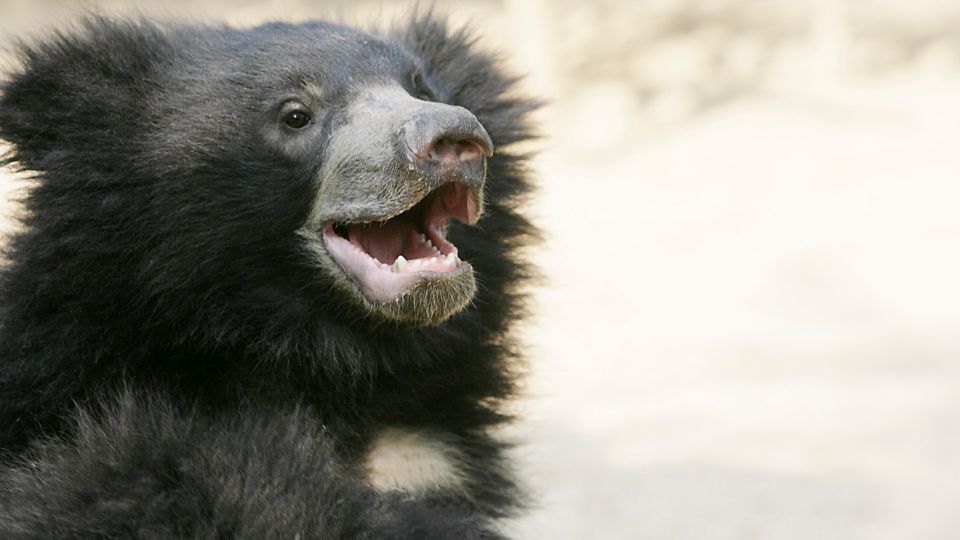
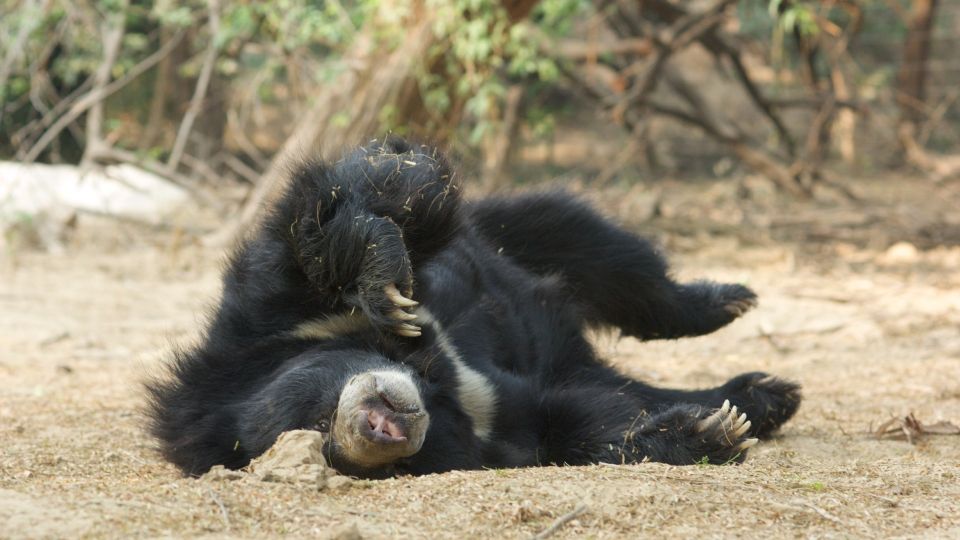
Each rescued bear undergoes a 90-day quarantine period during which he or she is given a complete health check and treated for any diseases, wounds and parasites. The bear is vaccinated against rabies, leptospirosis and infectious canine hepatitis. When first rescued the dancing bears also often needed surgery for horrific nose wounds, broken teeth and infected gums.
After the quarantine period, the bears have access to large socialisation enclosures where the behaviour and personality of each bear is closely monitored by the vets and staff.
Based on each bear’s personality, he or she is matched to a group and then moved to a larger free-range area. Full-time wildlife veterinary doctors and a dedicated team of bear keepers care for the rescued bears. The bear hospital is equipped with a laboratory in addition to essential equipment like X-ray, Ultrasound, Dental suite, Operating Theatre and other equipment required to meet any bear care need that may arise. A special cub weaning area of the bear sanctuary is dedicated to fostering bear cubs rescued from poachers as the young bears require a lot of careful attention during the early months.
-
Bannerghatta Bear Rescue Centre (BBRC)
At the end of 2005 International Animal Rescue and Wildlife SOS were given the chance to set up a second sanctuary for dancing bears in India within the beautiful Bannerghatta Safari Park outside Bangalore in the south.
The nature reserve is home to antelope, elephants, tigers, crocodiles and a variety of wild birds, and at the centre of the forest is a 37 acre area set aside for bears. Twenty-six bears were being kept in cages in the park in appalling conditions. They were suffering terribly from their long imprisonment and showing signs of psychological and physical trauma.
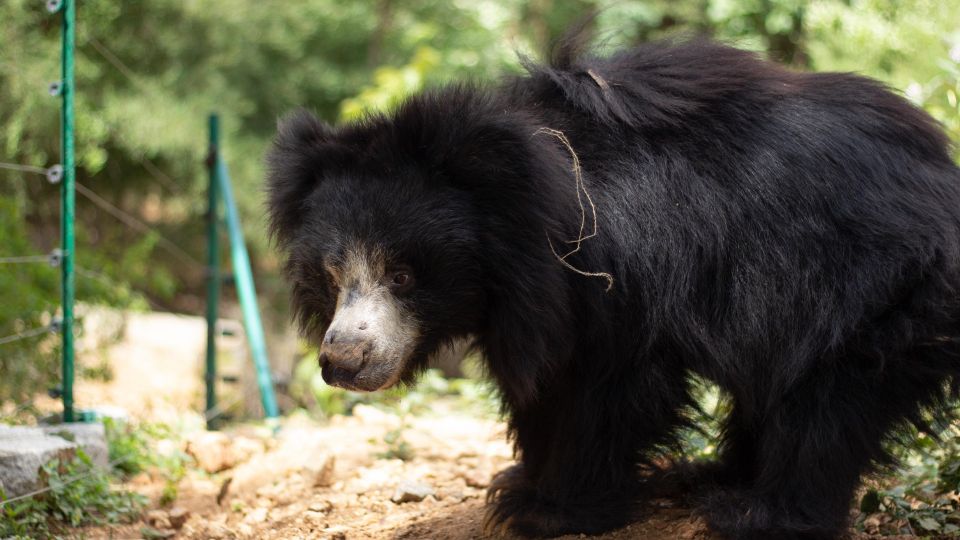
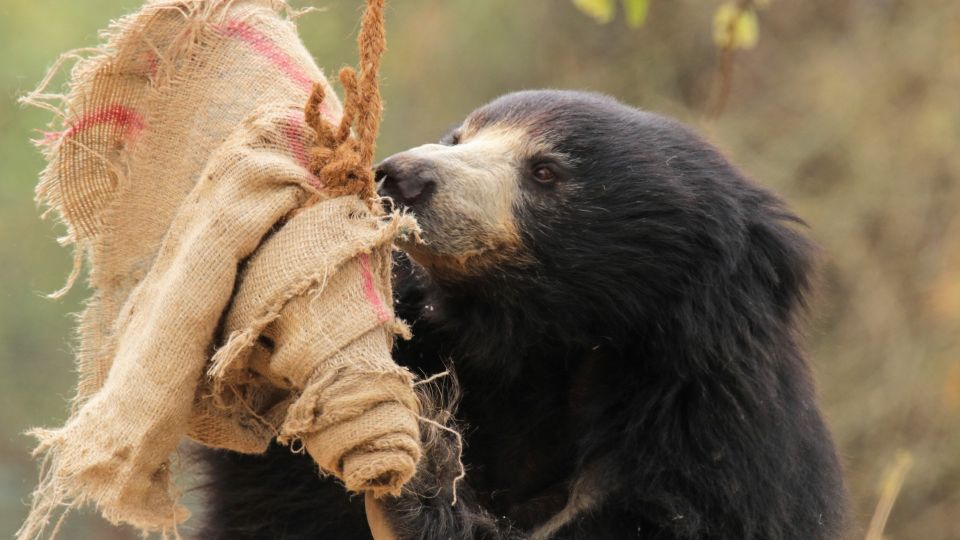
The Indian Conservator of Forests was extremely concerned when he learned of the neglect of the bears. He contacted Wildlife SOS for advice, who in turn called on International Animal Rescue for help.
Once the Conservator of Forests had visited the Agra Bear Rescue Facility he knew International Animal Rescue and Wildlife SOS could be trusted to look after the bears in Bannerghatta. Our two charities were given the go ahead to care for them and give them their freedom, and also to convert their prison into a brand new sanctuary for other rescued bears in the south of India.
This was a major breakthrough in our campaign to rescue bears in India. It spelt an end to the misery of the 26 bears and also provided the foundations for the sanctuary in southern India that we had been looking for.
Since those early days, much money and time has been invested in Bannerghatta so that the care and housing it provides for the bears equal the standards in Agra.
-
Van Vihar Bear Rescue Facility (VVBRF)
In 2008, as more families began surrendering their bears, IAR provided the funds to create a third bear rescue centre in central India – the Van Vihar Bear Rescue Facility. With hundreds of dancing bears being taken off the streets in a short time, there was an urgent need for another facility.
VVBRF was created in collaboration with the Madhya Pradesh Forest Department in the Van Vihar National Park, Bhopal. The bears in the facility were rescued or surrendered by their Kalandar masters after months of intensive community outreach work or handed over by the Forest Department for lifetime treatment and care.
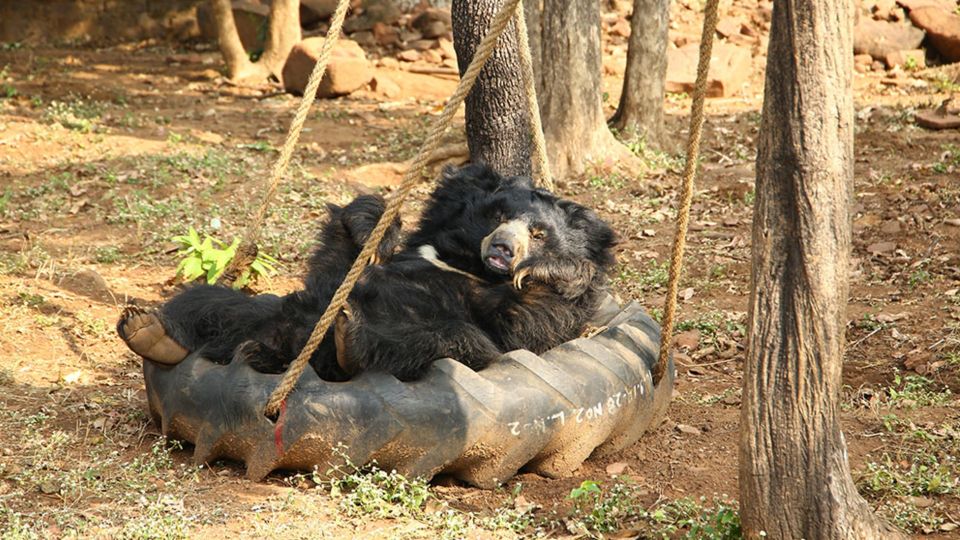
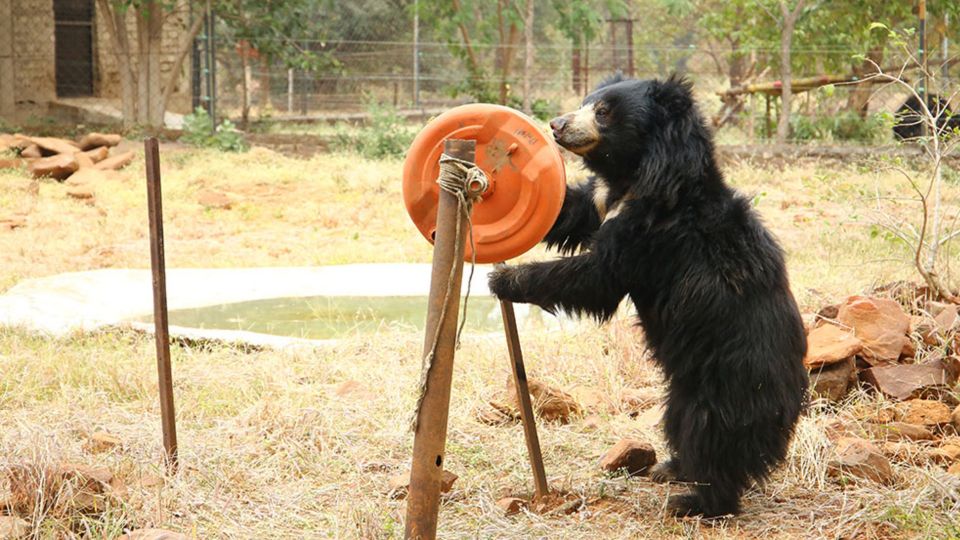
The rescued animals suffered from health problems such as tumours and tuberculosis; problems of malnutrition and dehydration; cataracts and opacity of vision; muzzle injuries, maggot wounds and ulcerations in the mouth; severely broken teeth and gum infections. They were restored to health with expert veterinary treatment and loving care, allowing them to enjoy a peaceful and pain-free retirement at the rescue facility.
-
Top Sloth Bear Facts
- The Indian Sloth Bear (Melursus ursinus) can be easily recognised by his shaggy black coat, long muzzle, protruding lip and by a white V-shaped patch on the chest.
- Sloth bears feed predominantly on termites and ants and employ a well-evolved method to dig them out.
- Their long, curved claws are used for penetrating insect mounds, which can be rock-hard.
- Sloth bears are solitary creatures and generally nocturnal. They grow up to 160cm in length and can weigh up to 80kgs.
- After a 6-7 month gestation period, sloth bears normally give birth to a litter of two cubs in an underground den. The cubs will often ride on their mother’s back, a unique trait among bears.
- Sloth bears are classified as ‘Vulnerable’ on the IUCN Red List. They are threatened by habitat loss, poaching for body parts and are sometimes captured for use in public entertainment or persecuted because they come into conflict with local villagers.
- Lifespan: Up to 40 years
- Height: 150 to 160cm

